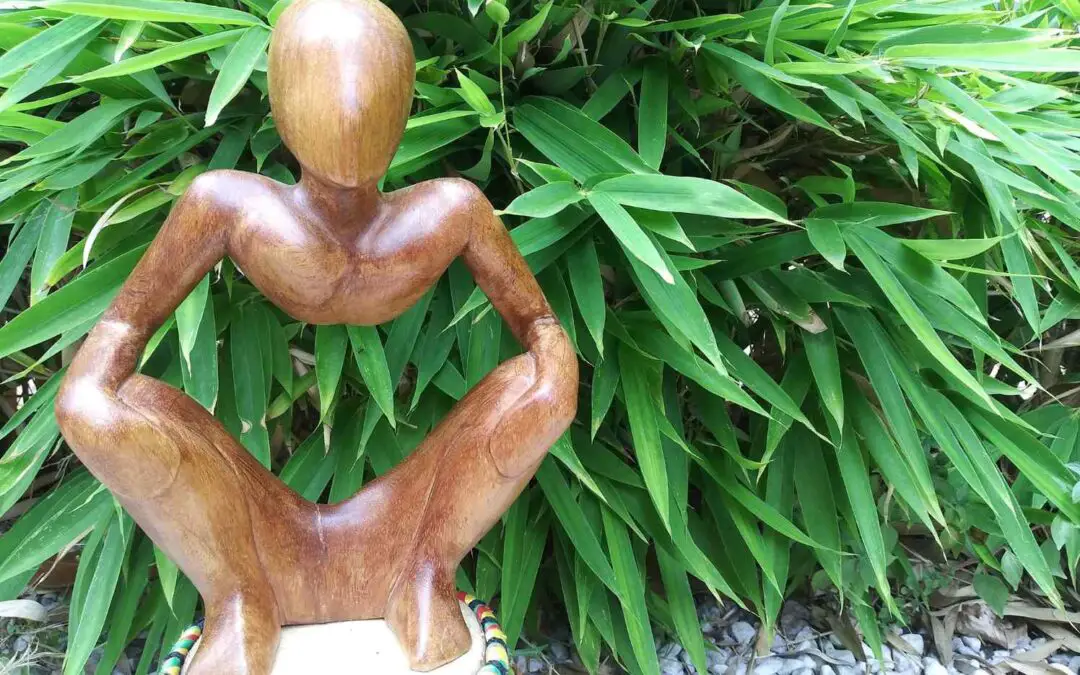If there’s anything I enjoy as much as bamboo, it’s probably peace of mind. But in the year 2020, that’s something awfully hard to come by. Between the germs, the lockdowns, the elections and the conspiracies, it seems like peace and tranquility have never been more elusive. Perhaps by the time you’re reading this, the twin threats of pandemic and political dysfunction will have worked themselves out. Either way, there’s really no bad time for a little mindfulness training.
Mindfulness refers to the state of being fully aware in the present moment, unencumbered by regrets of the past or worries of the future, free from judgment and interpretation. Meditation and breathing exercises are among the most popular and effective methods of achieving this peaceful state of mind. A good mindfulness practice can relax both the body and the mind, reducing stress and improving overall health.
The following article includes a collection of Mindfulness Hacks to help your mind and body unwind, even in the midst of the most anxiety inducing circumstances.
What is mindfulness?
Mindfulness is essentially the state of human consciousness expressed by the mantra “Be here now”. This also happens to be one of our most cherished slogans here at Bambu Batu. To be here now means detaching from life’s onslaught of distractions. It requires the practitioner to shut down the “monkey brain,” that which works tirelessly to revisit memories, pass judgments, organize to-do lists and plan for the future.
But mindfulness doesn’t mean turning off the brain altogether and suppressing the natural activity of thinking. When you are mindful, you still have thoughts. But the difference is that the thoughts don’t have you. It’s like stepping back and observing your thoughts from a bird’s eye perspective, with a bit of distance and objectivity. Rather than rejecting thoughts like sadness and anxiety, or clinging to things like joy, mindfulness recognizes each thought and feeling as valid and transient. As the thoughts are acknowledged, the observer or practitioner can let them pass on like clouds in the sky.
A lot of newcomers will give mindfulness a pass, claiming it doesn’t work for them, because their mind is just too active. But that’s a misconception of what mindfulness is all about. And, what’s more, those are probably the people with the most to gain from a little mindfulness practice. Again, it’s not about the cessation of thinking, but about slowing down to be fully aware of the thoughts you’re experiencing.

Center yourself with mindfulness hacks
Trying to quiet the mind might feel something like chasing your tail the first few times you try it. But in fact, it’s really not so complicated, and the results can be marvelous. Besides the immediate sense of calm and relaxation, a regular mindfulness practice can bring all sorts of bodily functions into balance, resulting in better sleep and better digestion. So here’s a few tips to get you started.
Mindful breathing
Probably the first thing they’ll teach you in any mindfulness course is to focus on your breath. And it’s really as easy as one, two, three. Just take time to become aware of each breath, as you inhale, and as you exhale.
It helps to count your breaths, as a way of focusing your attention. But instead of counting higher and higher, I find it more useful just to count one, two, three, one, two, three, and so on. This keeps your attention on the breathing rather than the actual number of breaths you’ve taken. After all, it’s not a competition to count the most breaths, but an exercise to dwell in the present.
Focus on the senses
Another great mindfulness trick you can do anywhere is simply to focus on your senses. This is an excellent way to increase your awareness and presence in the now. And instead of counting forward, this time we’ll count backward.
Start by observing, without judgment, five things you can see. Then notice four sounds you can hear. Then become aware of three things you can feel. Then recognize two scents you can smell. And finally, notice one taste that may be lingering on your tongue.
Become cognizant of all five senses. This is a sure fire way to become fully aware of your surroundings and fully present in the moment.
Chants and mantras
Chanting might sound a little too hippy-dippy for mindfulness beginners. But there are a variety of approaches to take, and not all of them will make you feel like you’ve run away and joined a cult. You can whisper to yourself with a positive affirmation, or you can resonantly chant some unintelligible syllables of Sanskrit. Or anything in between.
“Om mani padme hum” is a popular phrase, of Tibetan Buddhist origins. The syllables defy translation, but basically they are meant to invoke the divine and celebrate the interconnectedness of all beings. If that’s too esoteric, you can chant something more straightforward and self-explanatory, like “I am a magnet for money,” or “My mind is brilliant and my body is a temple.”
One the most popular, and surely the easiest chant is the sacred syllable “Om”. This sanskrit word has no literal translation, but represents the sound of all things in the cosmos vibrating together, signifying the unity of all things. This syllable Om, sometimes written “Aum”, actually consists of three individual sounds.
The beginning, middle and end of the Aum correspond with the three deities of the Hindu Trimurti. Together we have Brahma the creator, Vishnu the preserver, and Shiva the destroyer. You can think about these three forces, working sequentially and in harmony, as you chant the Om. And don’t forget, there’s also a fourth component, the silent space in between. This place of rest is an essential element in the endless cycle of birth and death.

Hack your brain chemistry and boost your mental health
Achieving mindfulness is a bit like brain surgery, only not quite so hard. But once you understand the chemistry of the brain, you can harness the powers of certain compounds to improve your state of mind and your overall mental health. The brain naturally produces these chemicals and hormones for various reasons. And when you know how they work, you can stimulate the brain to generate more of them, without the use of drugs or other foreign substances.
Dopamine
Something like Instant Karma, dopamine is a little reward that your brain releases when you do something well. It happens naturally when you complete a task or achieve a small victory. Eating can also trigger a dopamine response.
One way to get more dopamine in your daily diet is by writing a to-do list. It’s a great method of time management as well, and generally more effective if you write the list the night before. Make the list longer and more manageable by breaking bigger chores into multiple, smaller tasks. This not only makes the jobs easier to tackle, but also allows you more of those satisfying dopamine releases, each time you check an item off the list.
Endorphins
Endorphins are a class of natural pain killers that your body produces in the pituitary gland and which bond with opioid receptors in the brain. But you can trigger endorphins without experiencing severe pain or ingesting morphine.
Laughter and exercise are two of the easiest and most enjoyable ways to stimulate endorphin production. Go for a hike, lift some weights, or watch a funny movie. Maybe even get into a tickle fight. Eating chocolate can also boost endorphins, but don’t overdo it.
Oxytocin
Sometimes called the love hormone, oxytocin is most associated with affection and birth. A mother’s body produces oxytocin during labor, and men and women both experience it as part of being in love.
The most reliable way to induce oxytocin production is through physical contact. This can range from something as mild as holding hands or hugging, up to out and out love making. Playing with a baby or snuggling with your pet can also have this effect. You can even elevate your oxytocin by giving someone a compliment.
Serotonin
Also known as the happy chemical, serotonin serves a wide variety of functions, including mood regulation. It’s also related to memory and cognition, and is found primarily in the brain, the blood and the bowels.
If you want to stimulate serotonin and increase your happiness, outdoor exercise is one of the best ways. Trying running, swimming or cycling. But just walking in nature, enjoying some fresh air and sunshine, is enough to ramp up your serotonin. Meditation can also do the trick.
Conclusion
Even in the best of times, it seems like we humans are always looking for ways to make ourselves feel better. Of course, there are plenty of short cuts out there, but many of them can carry long term health risks. If you want to alter your mood and get yourself high, safely and naturally, a little mindfulness practice may be the best way to do it.
So whether you’re partying like it’s 1999, or just barely coping like it’s 2020, I hope you’ve found these tips, tricks and mindfulness hacks helpful. I don’t know about you, but I’m feeling better already.
Further reading
If you’re into mindfulness and zen, check out more of our enlightening articles on Buddhism and Eastern philosophy.




















